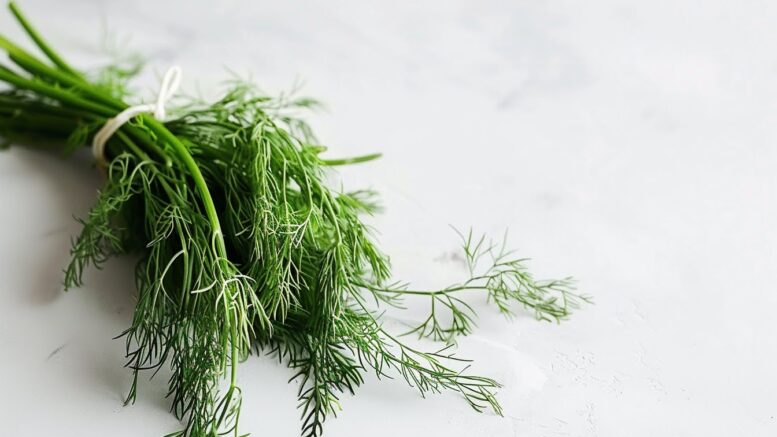Dill, a member of the parsley family, boasts a fennel-like appearance and is renowned for its aromatic leaves, seeds, and ripe fruit.
Originating from Mediterranean countries and southeastern Europe, dill has garnered popularity worldwide, with widespread cultivation in Europe, India, North America, and the UK. Its strong, aromatic taste, reminiscent of caraway, makes it a versatile herb, cherished for its ability to enhance a variety of dishes.
In European cuisine, particularly Eastern European and Scandinavian, dill is a staple seasoning, adding its distinct flavor to bread, soups, stews, sauces, fish, cucumber, and pickles. Indian cuisine also embraces dill, using it to flavor lentil or bean dishes, showcasing its adaptability across different culinary traditions. Moreover, when combined with other herbs, dill creates delightful herb-flavored vinegars that complement salads and other dishes, adding a burst of freshness and complexity.
While dill may not be as prevalent in Asian cuisine as in European and Indian cooking, its unique flavor still finds its way into various dishes, particularly in regions influenced by Eastern European culinary traditions. In Asian recipes like dumplings, stews, and pickled vegetables, dill imparts its distinctive aroma and taste, contributing to the rich tapestry of flavors in Asian cuisine. Whether used as a garnish or blended with other spices, dill adds a touch of freshness and herbaceousness, elevating the culinary experience with its vibrant flavor profile.
In Vietnamese cuisine, fresh dill is added to Vietnamese Sour Fish Soup (Canh Chua Ca) at the end to a tamarind-based broth simmering with fish, tomatoes, pineapple, and bean sprouts, while in Vietnamese Fish with Turmeric-Dill Sauce (Cha Ca La Vong), dill is a key ingredient, pairing with fish marinated in turmeric and other spices for a distinctive and aromatic dish. In Indian Dill Rice (Suva Chawal), fresh dill leaves are cooked with rice, cumin seeds, and sometimes peas, creating a simple yet flavorful accompaniment to curries. Lao Sausage (Sai Oua) incorporates dill along with other herbs and spices, giving this traditional Laotian sausage a unique and aromatic flavor.
Storage and Use
When purchasing dill, you can choose between fresh dill and dried dill, each offering distinct advantages. Fresh dill, available in the produce section, should have bright green, feathery leaves and a strong, fresh aroma. It provides a more vibrant and intense flavour compared to dried dill, making it ideal for dishes where a burst of fresh dill flavour is desired, such as salads, dressings, and garnishes. However, fresh dill has a shorter shelf life and should be stored in the refrigerator, where it typically lasts about one to two weeks. For longer storage, fresh dill can also be frozen, either chopped or as whole sprigs, for later use. On the other hand, dried dill, found in the spice section of supermarkets, offers the convenience of a longer shelf life and easy storage. While it lacks the same intensity and freshness as its fresh counterpart, dried dill is a handy substitute for cooked dishes where it can infuse its flavour over time, such as in soups, stews, and sauces. Both forms have their merits: fresh dill is preferred for its bright, aromatic flavour in raw or lightly cooked applications, while dried dill is valued for its longevity and convenience in everyday cooking.

